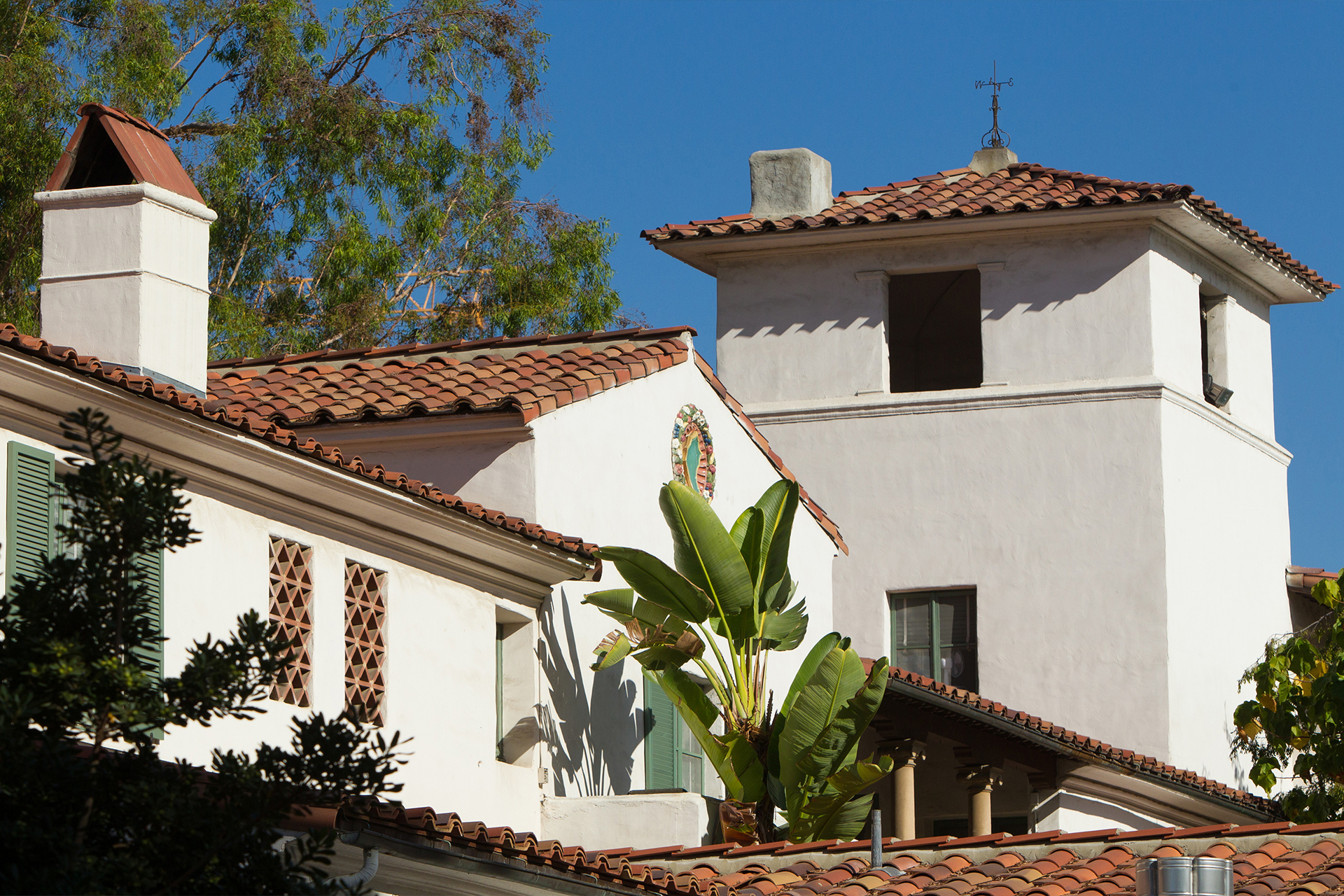
Explore campus
Native, pollinator-friendly, and drought tolerant plants make up the majority of the campus grounds.
Edible plants: Scripps campus has over 23 varieties of edible plants including grapefruit, pomegranate, oranges, and kumquats.
Native plants: are integrated throughout campus including toyons, mountain lilacs, and hummingbird sage.
Out of the nearly 960 trees on campus, we have 97 distinct species such as, Coast Live Oak, Jacaranda, and Mexican fan palms.
Turf: On campus, 90% of lawns have been converted to low water Bermuda bandera turf. Off campus, almost all college housing has xeriscape designs.
Watering: Campus is irrigated through drip irrigation and sprinklers. Irrigation are turned off in the winter months provided there is enough rain.
Tools: 80% of tools used by grounds staff are electric powered. As the remaining fuel-powered equipment breaks, replacement will be electric-powered.
The newest residence hall, Schow Hall, is Scripps’ first LEED Gold certified building. Sustainability features include low-flow water fixtures, LED lighting, ENERGY STAR® appliances, drip irrigation, and a storm water retention system that encourages percolation and ground water recharge.
The new Nucleus Science Center is Scripps’ second LEED certified building. Sustainability features include FSC-certified wood furnishings, double-paned windows, drought resistant native plant landscaping, and reduced light pollution. 87% of construction waste was diverted from the landfill
Building meters are fitted with MelRok IoT devices, allowing us to monitor real-time building energy consumption.
Solar PV arrays are located on Garrison Fine Arts Building, Lang Art Building, and Schow Hall. Energy-efficient LED bulbs are in use throughout campus. The pool at the Sally Tiernan Field House uses a variable speed drive pump so that energy supply never exceeds demand.
Waste
Our dining vendor, Bon Appetit, follows the EPA’s Food Recovery Hierarchy by trying to reduce waste where they can first. Any leftovers are donated to Chefs to End Hunger which provides food to those who need it.
Post-consumer food scrapes are composted through Huerta del Valle. From March-November 2023, Scripps diverted 35,000 pounds of food scraps to their compost program.
Reusable Green To-go Boxes
Scripps students, faculty, and staff can check out a reusable to-go box for the semester. Just ask for one when you swipe in. Each time you visit the dining hall you can exchange your dirty box for a clean one. This is a great option if you want to eat in your room or office!
Food sourcing
12% of the food purchases for fall 2023 are Farm to Fork, which is a program to source local food, and this program is continuously expanding.
Beef: is from cattle raised on vegetarian feed and never given antibiotics or hormones. We use only solid muscle meat and fat. No neck is allowed.
Chicken: is produced without the routine, non-therapeutic use of antibiotics.
Turkey: is produced without the routine, non-therapeutic use of antibiotics.
Pork: comes from hog farms that don’t confine cows to gestation crates for their entire pregnancies.
Eggs: are produced cage-free and certified by a credible animal welfare organization.
Milk & Yogurt: are sourced from dairies not using artificial hormones.
Fish & Seafood: All seafood purchases, wild and farmed, follow the sustainability guidelines of the Monterey Bay Aquarium’s Seafood Watch program.
Fruits & Vegetables: are grown locally, using sustainable and organic practices, whenever possible
Bon Appétit has committed to reducing companywide emissions by 38%, per calorie of food, by 2030. The foods we purchase and the dishes we menu drastically impact our carbon emissions.


